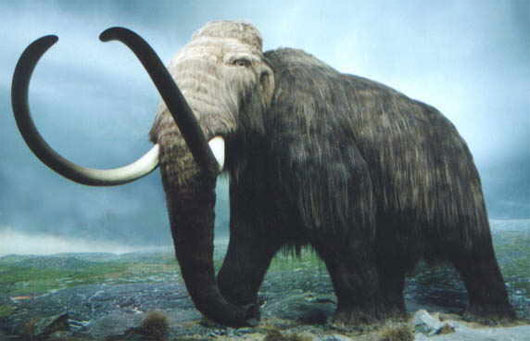People are Earth's greatest enemies?
So far, the scientific community is still debating whether humans are the main 'culprit' that causes the extinction of many large animals on Earth.
On Earth once dominated many large animals (called megafauna for short), from mammoths, giant beavers to sword tigers and horned turtles. However, in just over 2 million years, many of these giant mammals have been extinct completely or replaced with smaller copies, living alongside human beings increasingly in number. quantity.
Controversy over the exact cause of mass extinctions of large animals on Earth has erupted in recent years. On the one hand, the "culprit" is a natural climate change, while the opposite side is determined, it is the people along with our ways of eating meat that have "devastated" the world.

Humans are thought to be the main culprits in the extinction of many large mammals on Earth, including mammoths.(Photo: Corbis)
The annual Megafauna workshop takes place at St John's University in Oxford, England earlier this week as an opportunity for researchers, zoologists and archaeologists to debate the extinction of large mammals as well. how they disappear affects the way we live.
According to British environmental expert George Monbiot, there is a direct correlation between the emergence of people across continents with the disappearance of many large mammals around the globe. Mr. Monbiot cited for example that, before the 'erect' (Homo erectus), which was recognized as the first ancestor of man, appeared in Africa, the continent was flooded with giant monsters. , including many great elephants.
The 'upright' person possesses many characteristics that seem to make them unbeaten: the intelligence, the spirit of solidarity, the ability to adapt to almost any kind of food in difficult situations as well as the use of weapons hunt or fight other animals from afar. This fact can rob prey from large predators and push them and herbivores into depletion and extinction.
However, archaeological experts have countered the hypothesis of "excessive slaughter" over the years. For example, some researchers claim, of the 36 confirmed extinct species to date, only two species (mammoths and mastodons) show signs of being hunted or attacked by humans, including cuts to bone and body.
Other researchers have found similarities between the time when large mammals become extinct with major changes in temperature when the last ice age ended on Earth.
Some other experts favor the hypothesis that both human and climate change have an effect on the disappearance of many large mammals, but with different scales.
For example, according to research by Lewis Bartlett of the University of Exeter (UK) and colleagues, 1/4 - 1/3 of all extinctions are caused by climate change. Larger numbers are left by humans, indicating that humans are the main agents.
- How to execute the feared enemies of the Mayans
- Vote the greatest scientific invention in history
- Rare earth research: Where is Vietnam?
- The fatal mistake of genius
- Afghanistan is richer than we think
- Bees choke enemies to death
- China announced white books on rare earths
- The 10 greatest mathematicians in history
- Butterflies are both charming and hateful
- The greatest explorers in the world
- The most spicy when fighting enemies
- Solar cells do not use rare earth
 Discovered an ancient centipede fossil 99 million years old
Discovered an ancient centipede fossil 99 million years old Discovered bat-like dinosaurs in China
Discovered bat-like dinosaurs in China Discovered a 200-year-old bronze cannon of the coast
Discovered a 200-year-old bronze cannon of the coast Discover 305 million-year-old spider fossils
Discover 305 million-year-old spider fossils